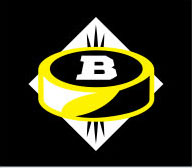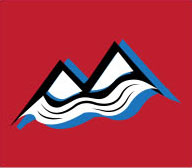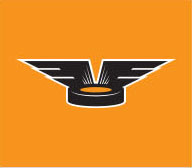Ranking Anaheim’s Prospect Positions
By Thomas Harrington
Now that the individual graduated prospects and prospect updates and profiles are complete, it’s time to rank the positional strength of Anaheim’s prospect system.
For more information on most of the players listed below, feel free to look back at the prospect profiles, updates, and draft reviews that have been published throughout the summer. Note: for players that can play multiple positions, they’ll be listed under the position that Anaheim lists them on the development camp roster. Even if I think they’re better in a different position, I’ll still go with what Anaheim lists them as in order to be consistent. Also, I’ll be listing players with the leagues and teams that they are expected to be with this coming season, not with who they played for last year.
The Anaheim Ducks graduated four prospects this past season: Sam Colangelo, Drew Helleson, Nikita Nesterenko, and Cutter Gauthier. Over the past two seasons, Anaheim has had a total of 10 prospects graduate. At the 2025 NHL Entry Draft, Anaheim chose a total of 10 players: four defensemen, three centers, two wingers, and one goaltender. With so many players leaving the prospect ranks and so many new players drafted, to go along with the three prospects acquired over the past year via trade and free agency, there has been a change in the complexion of Anaheim’s farm system. Anaheim’s top two prospects are now right winger Beckett Sennecke and center Roger McQueen. Last year, I had Anaheim’s centers as the fourth best prospect position with the Ducks; this year they’ve jumped up to the top spot. Right wingers fall from first to second, defense stays in the third spot, goaltending rises from fifth to fourth, and left wingers fall from second to fifth.
1. Centers
The center prospects take the top spot for two reasons. First, Anaheim added a number of high-end centers over the past year. Second, Anaheim only lost two center prospects: Josh Lopina and Carey Terrance. Lopina was not qualified when his entry-level deal expired, and Terrance was traded in the deal that brought Chris Kreider to Anaheim. The Ducks will have two AHL veterans with San Diego: Nathan Gaucher and Jan Mysak. Mysak will be looking to build off of a breakout season while Gaucher will be looking for a bounce back year after dealing with a major injury. The recently signed Tim Washe may be joining them, though he could end up spending the year in Anaheim instead. Kyle Kukkonen, Alexandre Blais, Eric Nilson, and McQueen will all be playing in the NCAA. This will be Kukkonen’s senior year, while Blais, Nilson, and McQueen will all be playing their first season of college hockey. The Ducks will have two center prospects playing in the CHL: Ethan Procyszyn and Noah Read in the OHL. Anaheim will have one center prospect playing overseas, as Lucas Pettersson will be playing in the SHL.
There’s little question that McQueen is Anaheim’s top center prospect. As long as he has fully recovered from his back injury, he could be Anaheim’s next great power forward. Washe is the most NHL ready of this group, having played in two NHL games at the end of last season. He could become a good third or fourth line center someday. Despite a down year, Gaucher is still one of Anaheim’s better center prospects and could also become a good bottom six center. It does feel like both Pettersson and Nilson have surpassed him on Anaheim’s depth chart, and either could become a second or third line center in the NHL.
Mysak showed how good he can be at the AHL level this past season. If he keeps improving, he could become a depth NHL center. Procyszyn is another who has a chance at the NHL if he develops properly. At worst, he will likely become a good AHL player. Kukkonen and Blais both feel like players who will likely see time in both the NHL and AHL, but play more games with the Gulls than the Ducks. Read is one of the youngest players in the system and among the most difficult to predict. If he can really take off this year with London, he could be on his way to the NHL in the future.
2. Right Wingers
Anaheim only lost one notable right wing prospect over the last year, Colangelo, as he graduated from the prospect ranks. This group falls from first to second because of the loss of Colangelo, and because I think Anaheim’s center prospects have surpassed the right wingers with the new additions made over the past year. Coulson Pitre, Yegor Sidorov, Judd Caulfield, Jaxsen Wiebe, and Sasha Pastujov will all be playing for the San Diego Gulls. All of them are AHL veterans and will hopefully help lead San Diego back to the Calder Cup Playoffs. Both Wiebe and Pastujov spent some time in the ECHL last year as well, but hopefully they won’t this year.
Anaheim will have two right wing prospects playing college hockey: Michael Callow and Austin Burnevik. This will be Callow’s junior year and Burnevik’s sophomore year. The Ducks will have at least two right wing prospects playing in junior hockey, Brady Turko in the WHL and Maxim Masse in the QMJHL. This will likely be Masse’s final year of junior hockey while Turko still has a couple more ahead of him. The wild card is Sennecke. He’s not eligible for the AHL, so he’ll either be with Anaheim in the NHL or with Oshawa in the OHL this year. Even if he spends the year playing in the OHL, this will be Sennecke’s final year of junior hockey.
Sennecke is Anaheim’s top right wing prospect. He has a high degree of skill and will hopefully become Anaheim’s top right right winger for years to come. Pastujov and Sidorov both had strong seasons in San Diego and have the highest ceiling of the rest of Anaheim’s right wing prospects. Both have a chance to become middle six wingers in the future. Pitre and Masse don’t have the same offensive ceiling but contribute on the ice in other ways and could become bottom six wingers in the future. Burnevik isn’t the most skilled forward, but goes to the front of the net and could see time on a team’s second powerplay unit while getting primarily bottom six minutes at even strength. Caulfield doesn’t have a high ceiling but has a strong work ethic and could fit right into Anaheim’s fourth line someday. Callow looks more like a future AHL player, but if he plays well in his final two years of college hockey, he has a chance to make it to the NHL. Wiebe also looks like a minor league forward, but if he makes it to the NHL, it will be for his physical presence and not his scoring ability. Turko is a lot like Read, a very young prospect, and it’s difficult to know what the future will hold for him. This coming season could be very telling for what he can do eventually.
3. The Blueline
Helleson is the biggest defensive prospect Anaheim’s system lost, though they also lost Will Francis and Vojtech Port, both of whose rights expired. However, Francis did sign an AHL-only deal with the San Diego Gulls, so while Anaheim doesn’t own his rights, he is still playing within the organization. There is a ton of depth in this group, but right now, I don’t think there’s a player who is at the same level of McQueen or Sennecke, leading to this ranking. Tristan Luneau is the most NHL ready player after playing in 13 games with Anaheim over the past two seasons. He’ll likely split time between the NHL and AHL this season. Ian Moore is another player who could play for both Anaheim and San Diego, but he’s more likely to spend more time in the AHL.
Joining them in San Diego are Tyson Hinds, Noah Warren, Jeremie Biakabutuka, and Konnor Smith. This will be Konnor Smith’s first professional season, and he and Biakabutuka could both see time in the ECHL as well. The Ducks will have two defensive prospects playing in Canadian Junior hockey, Tarin Smith in the WHL and Alexis Mathieu in the QMJHL, as well as two defensemen playing college hockey, Drew Schock and Anthony Allain-Samake. This will be the first year of NCAA hockey for both Schock and Allain-Samake. Darels Uljanskis will be leaving Europe and coming to North America to play in the OHL this coming season, and then the NCAA the following year. In Europe, Lasse Boelius will be playing in the Liiga. It has yet to be announced where Stian Solberg will play, but it’s likely he’ll join the Gulls for the entire season.
Solberg and Luneau are Anaheim’s top two defensive prospects, and they play very different styles of hockey. Solberg is much more known for his physical play while Luneau is more known for his offensive abilities. Neither one projects as a #1 defenseman, but both will likely become solid top four defensemen, and maybe even a top pairing one. Moore doesn’t have the same ceiling, but he’s knocking on the NHL’s door and is Anaheim’s third-best defensive prospect. Tarin Smith can play in all situations and could become a fourth or fifth defenseman someday. Hinds and Warren are more known for their shutdown, physical play and could become bottom pairing players someday. Boelius and Schock are very good skaters but need to work on their overall game. If they develop properly, either of them could become a bottom pairing defender who gets time on the powerplay. Konnor Smith and Mathieu are physical players but feel more suited to be a team’s sixth or seventh defenseman. Uljanskis is a well rounded player, but his overall skill level likely tops out as a team’s extra defenseman. Biakabutuka will likely primarily be a minor league defenseman who gets the occasional callup to the NHL. Similar to Turko and Read, Allain-Samake is a very young prospect with a long road ahead of him. He’ll be one of the more interesting players to watch develop this year.
4. Between The Pipes
The Ducks didn’t lose any goaltending prospects this past year, and in fact added to this group at the draft. Most of Anaheim’s goaltending prospects will be playing in North America this year. After missing all of last season with an injury, Tomas Suchanek should be back in San Diego, though he may see some time in the ECHL to readjust to professional hockey. Joining him will be Calle Clang and Vyacheslav Buteyets. Buteyets will likely spend much of the year in the ECHL, while Suchanek and Clang fight for playing time in San Diego behind Ville Husso. Newly drafted Elijah Neuenschwander will be playing overseas, likely in both the NL and SL. After bouncing across four different leagues last year, Damian Clara will be suiting up in the SHL this coming season.
Despite a down year, I still have Clara as Anaheim’s top goaltending prospect, though he’s still probably a number of years from making it to the NHL. Suchanek could become a solid NHL backup someday, and maybe even become more than that. Depending on how he looks after his recovery, he’s probably the closest to the NHL out of Anaheim’s goaltending prospects. Right now, Clang and Buteyets look more like career minor league goaltenders, but given how hard this position is to project, it wouldn’t surprise me to see either one in the NHL someday. Neuenschwander is definitely a wildcard, and does have NHL potential. He’ll be one to watch in the coming years.
5. Left Wingers
Left wingers lost the most prospects over the last year, starting with Anaheim’s top prospect from last summer, Gauthier. Pavol Regenda was traded while Nikita Nesterenko graduated. Also, Artyom Galimov will be 26 at the start of the season and is no longer considered a prospect by the NHL. That leaves only a few left wingers left in the system. Nico Myatovic will be entering his second AHL season, while Emile Guite will be in his third QMJHL season. Finally, Herman Traff will be playing in Europe, likely in the HockeyAllsvenskan.
Traff feels like the most likely left winger to make it to the NHL as a bottom six forward. Myatovic could as well. I think Guite has the highest ceiling of the three of them, but he really needs to have a bounce back season after only putting up 30 points in 59 games last year. Myatovic is the closest to the NHL of these three players, but I do not expect to see him in Anaheim this year.
In recent years, Anaheim prospects like Leo Carlsson, Lukas Dostal, Pavel Mintyukov, Gauthier, and Colangelo have all left the prospect ranks and become NHL players. Despite so much talent leaving Anaheim’s prospect ranks, the Ducks still have a very good farm system thanks to high draft picks, trades, and signings. After graduating 10 prospects over the past two years, I expect far fewer to graduate next summer, but there are some players in San Diego who could surprise me, similar to what Helleson did this past season. While not every highly rated prospect will work out, there could also be late-round surprises that do. The hope is that some of these young prospects won’t just become NHL players, but be able to help the Ducks get back to the playoffs and become a contender again.
Next up will be Anaheim’s top 10 rookies.
Listen to our hockey podcast by clicking below or visiting us at Podomatic, Rumble, Spreaker, or YouTube.
Support us by becoming a DucksNPucks patron! Members can win game tickets, Ducks gear, and more!
Want to start your sports media career? Then Join The Puck Network!
DucksNPucks is part of The Puck Network, which covers the entire NHL. There are openings to cover your favorite team(s)! If you are interested, then apply by filling out the form here: Join Our Team. What are you waiting for? Start your sports media career TODAY!
September 16th, 2025




































